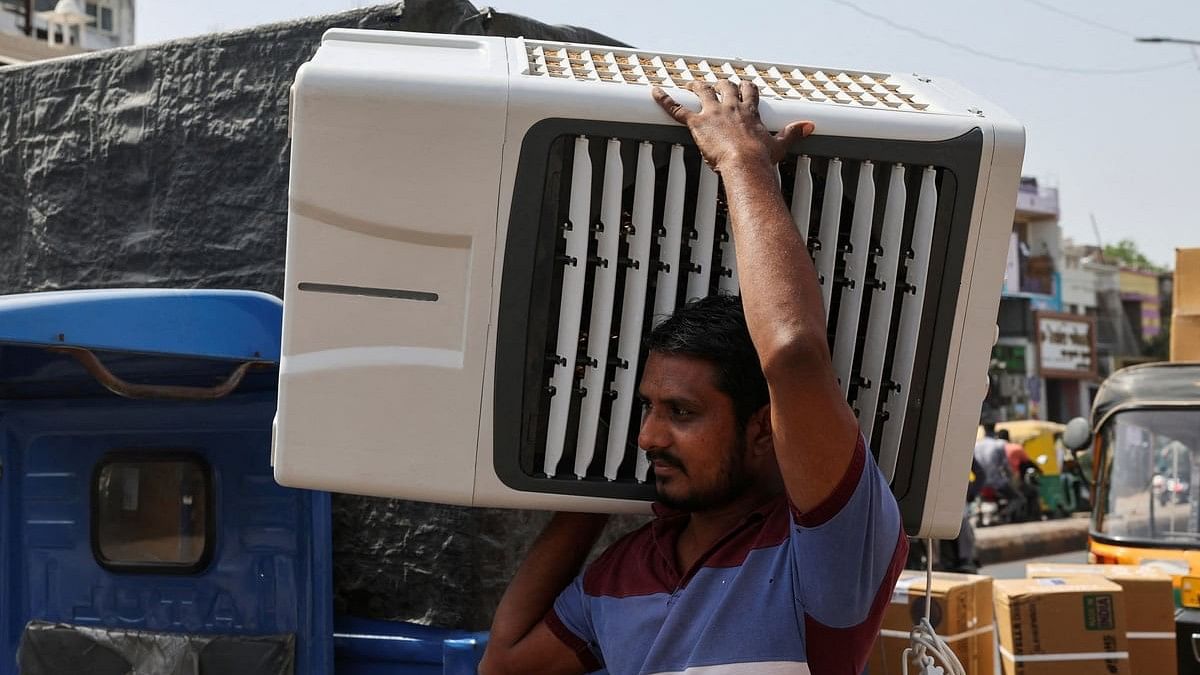
A worker carries an air cooler for delivery to a customer during the heat wave in Ahmedabad.
Credit: Reuters Photo
While the monsoon has hit the southern part of India, large swathes of central and northern India are in the grip of a severe heat wave. Over 50 persons have lost their lives in the last 48 hours due to the impact of heat. Many polling officials and voters were taken ill and experienced heat strokes in the last phase of polling on Saturday. Temperatures reportedly soared to an unprecedented 52.9 degree Celsius in an area of Delhi, though the India Meteorological Department (IMD) attributed it to sensor errors and local factors. People experience the heat only locally and local factors cannot be dismissed because they are at play everywhere. The previous record in the country was 51 degrees, recorded in Rajasthan’s Phalodi in 2016. The National Capital Region (NCR), Punjab, Haryana and Rajasthan are particularly experiencing scorching heat. There are reports of heat stress and distress from other parts of northern India and even from coastal areas like Orissa.
Local factors combine with situations in the wider region, like increasing deforestation and desertification, and still bigger issues like climate change, to cause runaway increases in temperatures and a decline in rainfall. Desert winds from Rajasthan and hot blasts from Haryana influence climate in the NCR and areas surrounding it. The desert is advancing and the tree cover is diminishing. Over 25 per cent of India’s land mass is facing the threat of desertification. Changes in land use, spreading urban sprawls and unchecked extraction of ground water have also contributed to the situation. Increasing urban constructions and the building of paved roads with materials like concrete and steel add to the heat stress. A recent research report pointed out that a combination of air temperature, land surface temperature and relative humidity and an increase in built-up areas and concretisation, have made metro cities much hotter than they were.
There is a need for short term and long term measures to counter the threat of heat waves. Lakhs of families live in houses with no protection against heat, and millions of people work in extreme heat. Heat action plans exist in many states but they are not implemented. Heat waves should be treated as natural disasters like floods and cyclones, and mitigation and adaptation plans need to be implemented. In the short term, there should be issuance of timely alerts, staggering of work hours, and provision of public facilities for water and shelter. In the long term, urban plans should follow heat-resistant construction strategies for homes and public infrastructure. Trees, water bodies and green spaces should form integral parts of urban spaces. The threat of climate change should guide all policies and actions at governmental and other levels.